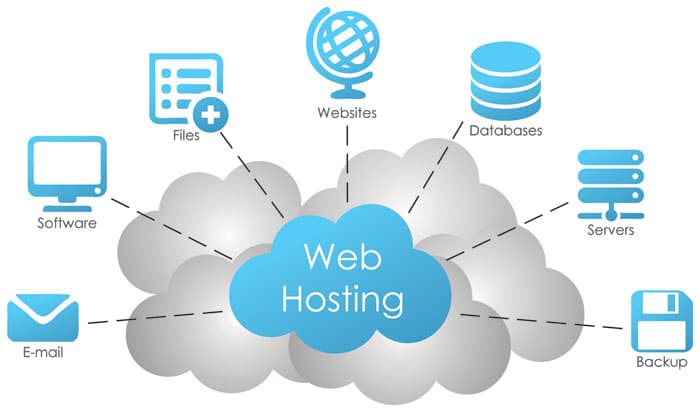If you’ve spent any amount of time on a web host’s site, you’ve probably seen terms like shared, VPS, dedicated, cloud, WordPress, and reseller. They represent the different web hosting types, but not every web host offers them all. Plus, the hosting types differ from one another in significant ways. Nearly every web host offers shared hosting which will be your cheapest option.
With shared hosting, your website shares a server, as well as server resources with many other sites. If you don’t expect much traffic and want to keep your web hosting budget small, shared hosting is the way to go. You should expect to pay less than ten dollars a month, though keep in mind shared hosting is best suited for small sites that don’t need a huge amount of bandwidth.
Since you’re sharing resources with other websites, you should be prepared for the occasional slowdown. Larger businesses that expect big traffic to their sites should pick up VPS or dedicated hosting, each of which offers increasingly powerful server specs. VPS hosting is like a high-powered version of shared hosting, except that far fewer websites share a server’s resources, which are also a bit more segregated. VPS hosting also costs more than shared hosting, but you should be paying less than a hundred dollars per month. Dedicated hosting places your site on a server all by itself, so it can leverage a server’s full power. This most expensive type of hosting may cost you a hundred dollars or more per month for the raw power you get. Reseller hosting lets you start your own branded web hosting business without worrying about building the infrastructure from scratch. WordPress hosting lets you build a site in an environment that caters to the world’s most popular content management system. And cloud hosting? That’s an entirely different beast that lets you easily scale website power across multiple servers, though not every web host offers it.
The pricing for these hosting tiers are all over the place, so shopping around is vital. “Bandwidth” and “data transfer” are frequently used interchangeably to define the amount of data that your website serves to visitors, but the terms technically don’t have the same definitions. Bandwidth represents the total amount of data that can be transferred at one time, while data transfer is the throughput or the actual amount of information that can be used over a given period of time-typically a month. If your website exceeds its allotted monthly data transfers, a web host may slow your site’s data transfer speeds or charge you a penalty fee. It may even prompt you to upgrade to a higher web hosting tier. It’s good to know your site’s data limitations before you run into situations like this. Web hosts will entice you to sign up for their web hosting plans by tempting you with the promise of unlimited storage or data transfers. In most cases, it’s not a completely honest deal as it almost always has limitations that vary by company.
FatCow, for example, offers “oodles” of disk space, and states that there’s no cap on a user’s content, as long as that person remains fully compliant with the company’s terms of service and utilizes their storage. It’s just like the bottomless shrimp buffet. Eventually, a restaurant will cut you off if they don’t simply run out of shrimp first. Unlimited storage and data transfers are typically associated with shared or WordPress plans, and they let you run wild, within limits. If your blog gets a steady stream of reasonable traffic, you’ll be in good standing. However, you shouldn’t expect to stream or upload 50TB of data per day. You should consult a web host’s terms of service or a customer service representative to learn exactly what you can and can’t do within the scope of your plan’s unlimited offering. For example, DreamHost states that it doesn’t track “bandwidth or traffic, so you never have to worry about “those pesky overage fees.” If you’re looking to sign up for shared web hosting, you’ll likely receive real estate on a traditional hard disk drive server.
The advantage of an HDD-based server is the large storage amounts offered on the cheap. As you move up the hosting ladder, web hosts will give you the option to build a site on a solid-state drive. SSD-based servers are lightning-fast storage units, but they’re quite pricey. So your SSD-based servers typically carry much smaller storage totals than HDDs. You’ll rarely see 1TB SSD servers, which is a number that’s commonplace in the HDD arena. Nearly every web host offers Linux as an operating system option to power their servers. Even if you aren’t familiar with Linux, you don’t need to do any special work on the back end to build a website.
That said, if your site needs the ASP or ASP.NET scripting frameworks, you’ll need to run with the Windows Server operating system. That’s because the script you write and the webpage you produce will only function in a Windows-based environment. Microsoft apps such as Office or Outlook easily integrate with the server. The downside? Windows servers are incompatible with Linux-based, open-source software unless you do some tinkering.
We recommend Offshore Hosting from Romania.


